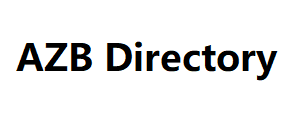Mastering personalization and customizing messages with phone number lists involves tailoring your communication to individual recipients in order to enhance engagement and achieve your desired outcomes. Whether you’re sending promotional messages, notifications, reminders, or any other type of communication, personalization can greatly improve the effectiveness of your campaigns. Here’s how you can go about it: Segmentation and Audience Analysis: Before you start sending messages, divide your phone number list into segments based on relevant criteria. This could include demographics, past interactions, purchase history, interests, or any other relevant data.
This segmentation allows
You to create targeted messages that resonate with each group. Data Collection and Enrichment: Gather as much data as possible about your recipients. This might include their names, locations, preferences, and any other pertinent Canada Phone Number List information. You can use tools or services to enrich your data and gather insights that enable more effective personalization. Personalized Content: Craft messages that are personalized to each recipient. Use their names, reference past interactions or purchases, and include content that is relevant to their interests. This level of personalization shows that you value them as individuals, increasing the likelihood of engagement.
Dynamic Fields
If you’re using an automated messaging system, utilize dynamic fields to insert recipient-specific information. For AZB Directory example, “Hi [Name], we noticed you recently purchased [Product], and we thought you might be interested in [Related Product].” Behavior-Based Messages: Create messages based on the recipient’s behavior. If they abandoned a shopping cart, send a follow-up message with a personalized offer. If they haven’t engaged in a while, send a re-engagement message tailored to their preferences. Timing and Frequency: Customize the timing and frequency of your messages based on recipient behavior. Some people might prefer receiving messages in the morning, while others might engage better in the evening. Avoid bombarding recipients with messages, as it can lead to unsubscribes. A/B Testing: Experiment with different personalization strategies.
Use A/B testing to determine which types of personalization resonate best with your audience, and then refine your approach accordingly. Opt-In and Privacy: Ensure that recipients have opted in to receive messages from you. Also, respect their privacy and data protection rights. Make it easy for them to opt out if they no longer want to receive messages. Feedback and Adaptation: Pay attention to recipient feedback and engagement metrics. Adapt your personalization strategy based on what’s working and what isn’t. Multichannel Personalization: Extend personalization across different communication channels, such as email, SMS, social media, and more. Consistency in messaging across channels reinforces the personal touch. Testing and Iteration: Continuously test and refine your personalization techniques. As technology and consumer behavior evolve, your personalization strategies should adapt as well. Remember, the key to successful personalization is genuineness. Recipients can often tell when a message is overly automated or lacks authenticity. Strive to build real connections by understanding your audience and tailoring your messages in ways that add value to their lives.







